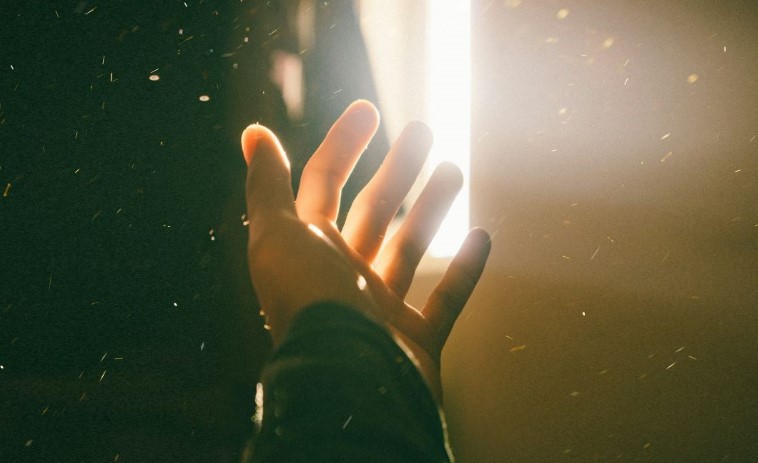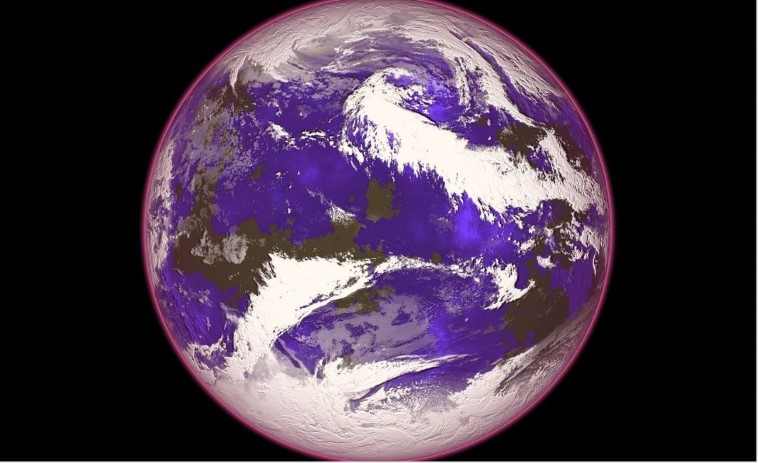Should we be afraid of the Sun?

The Sun is just one of several billion stars scattered all over the empty space of the universe. But for us inhabitants of this Blue Planet, it is a source of life. Although it allows us to live, it can also easily destroy us.
Ancient civilizations knew how important the Sun is for life, so it was most often considered a deity.
Many thousands of years after our long-forgotten ancestors, we are asking: Should we be afraid of the Sun? Unsurprisingly, this question pops up mostly during the summer months.

So, to begin with, the Sun has existed as it is today for about five billion years. Every second in its center, 600 million tons of hydrogen in the process of fusion turns into helium. This creates more energy than humanity produces in a year.
Most of the energy emitted by the Sun is in the form of electromagnetic (EM) radiation. The Sun radiates in all parts of the EM spectrum, but due to its temperature, this radiation is most intense in the visible part of the spectrum.
A large part of the radiation emitted by the Sun is in the infrared (IC) and ultraviolet (UV) spectrum, which in terms of wavelengths (energies) are right next to the visible region. Due to the movement of the Earth, the angle at which the rays fall on the surface changes and obviously the seasons change as well.
The most important part of radiation in these summer months is UV radiation. This radiation is responsible for the change in skin color after sunbathing.
UV
There are three types of UV radiation, namely UVA, UVB and UVC. The most dangerous is UVC radiation. It has the most energy and is deadly, but paradoxically we owe it our existence. How so?

Once upon a time, at the time of the creation of the Earth, UVC radiation reached the surface of the planet without any major problems. The composition of the atmosphere was different from today – there was no ozone, that gaseous shield had yet to be formed.
On their way through the atmosphere, the rays hit oxygen molecules, breaking them up and creating pairs of oxygen atoms. These free atoms bonded to other oxygen molecules and thus ozone was formed!
Time passed, the number of molecules became larger and larger, at one point a balance was established, the same number of molecules appeared and disappeared, the ozone layer was created.
This same process takes place even today, UVC radiation constantly bombards the ozone layer and thus contributes to the natural renewal of this important shield.

UVB radiation has a slightly lower energy than UVC. A large part of this radiation is retained by the ozone layer, but a part reaches the Earth’s surface. While the existing ozone layer is more than enough to stop UVC radiation, this is not the case with UVB radiation.
Due to the lower energy that this radiation possesses, it cannot break molecules, the way UVC does it, so these rays pass through the atmosphere much more easily.
UVA radiation has the lowest energy, and, unlike the previous two types of UV radiation, it reaches us unhindered, but luckily it is far less dangerous for us humans.
Sunbathing and the effects of UV radiation
All three types of UV radiation belong to the so-called ionizing radiation. The basic property of ionizing radiation is that it causes changes in molecules, atoms and even atomic nuclei. These rays are named after the ionization process.
As is the case with all types of radiation, UV radiation is made up of photons of the appropriate frequency. Ionization is a process in which a photon of radiation hits an atom, gives it all the energy it possesses, the photon disappears and the atom is left without one (or more) electrons, and thus free electrons and a positive ion are created.
A similar process can also take place on molecules, only then the photon energy is spent on breaking molecular bonds or ionizing molecules. The type of change that radiation can bring about depends on its energy. UV radiation can ionize atoms and break molecular bonds.
All changes caused by ionizing radiation take place at the level of molecules and atoms. The resulting consequences of exposure to radiation accumulate throughout life, the resulting changes cannot be repaired and there is no way for a person to acquire resistance to radiation.

In addition to visible light, which allows us to distinguish colors and heats the surface, UVA and UVB rays also fall on the skin. When UV rays reach the skin, they continue their journey through our body. Due to the different energy, they don’t travel to the same depth.
As we all know, after exposure to the sun, the skin gets a darker color, and after a longer stay outside, burns can also appear. The main culprit for these changes is UV radiation. The relative ratio of UVA and UVB radiation in sunlight is approximately 99% for UVA and 1% for UVB radiation, but even just that 1% of UVB radiation is enough to make it much more dangerous.
The main culprit for burns is UVB radiation. When these rays (photons) travel through our skin, the photons soon collide with the molecules that make up our skin. During these collisions, photons transfer their energy to molecules, breaking molecular bonds and changes in the chemical composition of the skin at the place where the collision took place.
If sunbathing is long-term, the number of broken molecules will get higher. This chemical change in the skin is accompanied by the appearance of painful burns on the surface. After stopping the radiation, the burns will disappear from the surface, but the changes that occurred inside the skin will remain there, hidden from our eyes, for the rest of our lives.

Sometimes UVB photons hit DNA molecules in cells. Then, something much more dangerous than burns can occur. It is probably known that DNA molecules are responsible for the process of cell division and defining the function of cells in an individual’s organism.
DNA damage can lead to the creation of “mutant” cells, i.e. to the occurrence of some types of skin cancer. Fortunately for us, these changes are not frequent, but if you spend more time sunbathing or get burned often, the probability of skin cancer is higher.
Regardless of the huge percentage (of 99%), UVA radiation is incomparably less dangerous than UVB radiation, but it can also cause unwanted effects. The energy of UVA radiation is insufficient to cause changes in the surface layers of the skin.
The photons of this radiation travel deeper and reach the layer containing the pigment melanin, which gives the skin its color. When photons of UVA radiation hit melanin molecules, oxidation occurs (binding of oxygen) and the pigment acquires a darker brown color. As a result of this effect, the skin gets a darker color.
Finally, it should be noted that we are talking about statistical, random, processes and risk factors. It does not mean that staying in the sun will surely cause burns or cancer, nor does avoiding the sun mean certain protection against skin cancer. Sunbathing is only one of the risk factors, but on the other hand it is necessary to survive!
How about a tribute to the ones you love? Did you know that here at OSR you can name stars?

